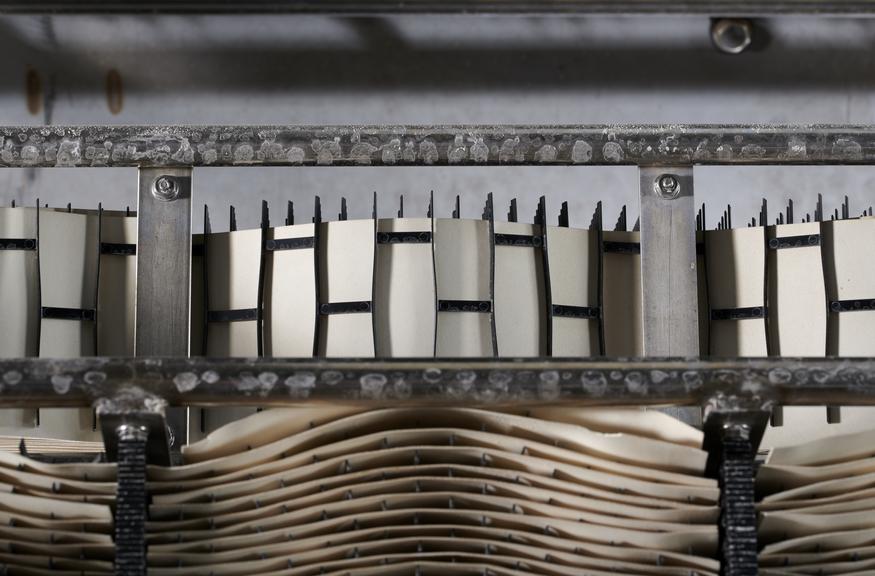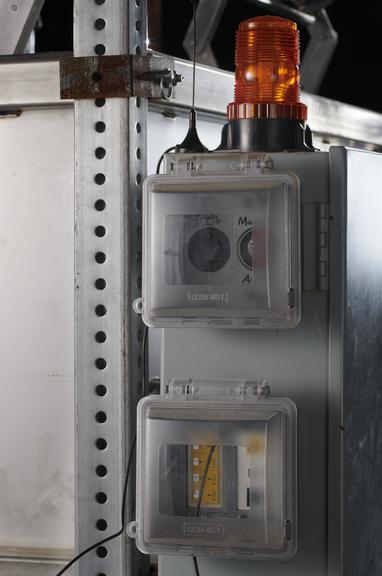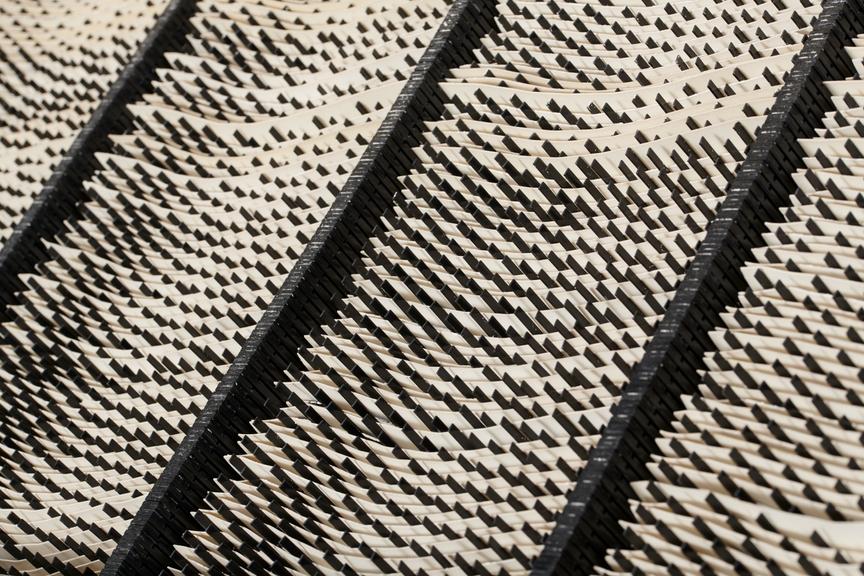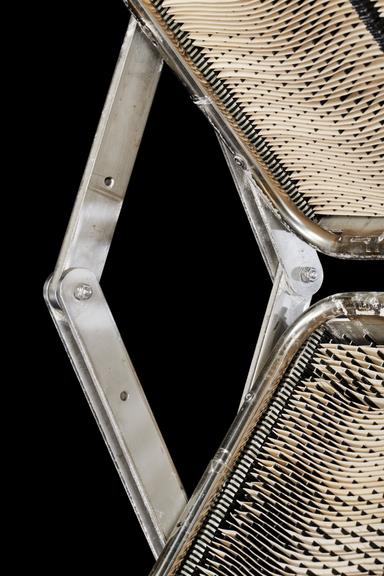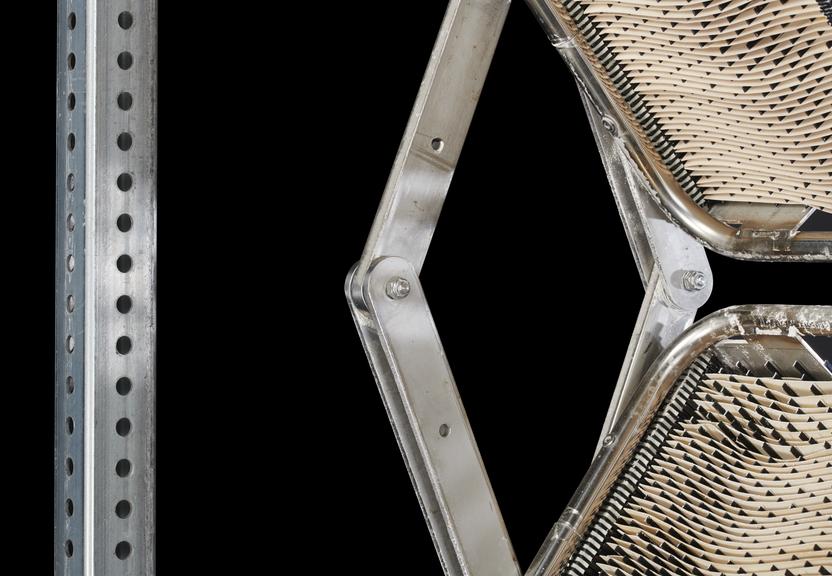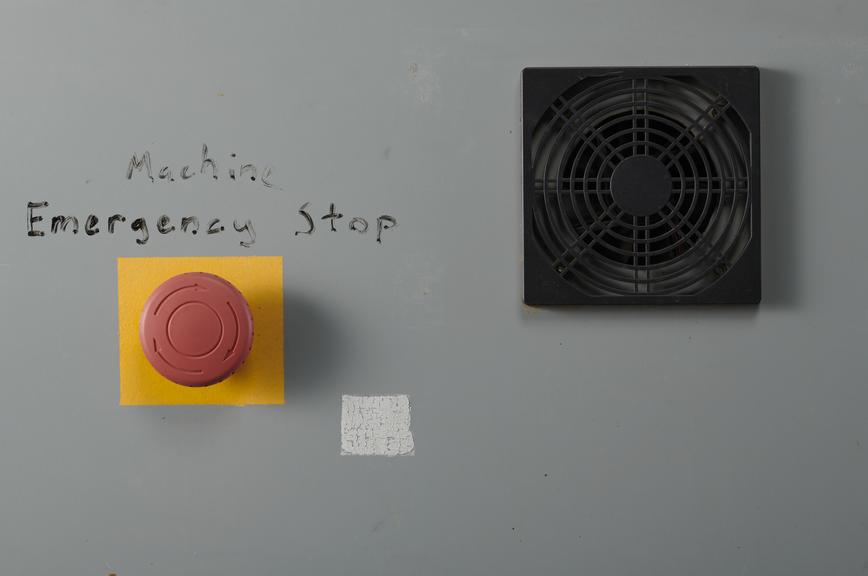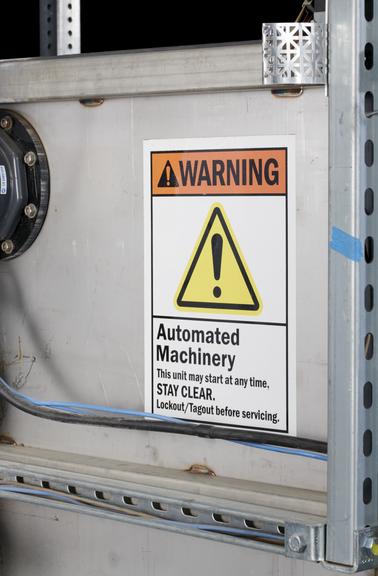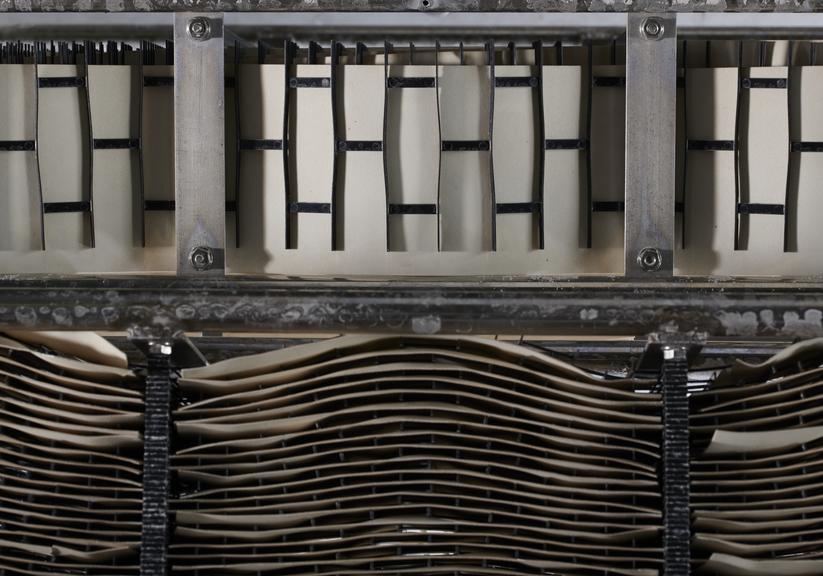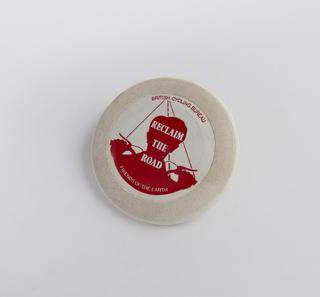Tank from mechanical tree prototype designed by Klaus Lackner, 2017
Tank, part of mechanical tree prototype for direct capture of carbon dioxide from the air, designed and built by Klaus Lackner’s team at the Center for Negative Carbon Emissions, Arizona State University, Tempe, Arizona, USA, 2017.
More
This prototype was developed to investigate the scientific and commercial feasibility of direct air capture (DAC), a means of removing carbon dioxide from the atmosphere. Klaus Lackner was one of the earliest champions of DAC during the 1990s; now his design is one of several commercial machines in development around the world.
The carbon-binding material of which the ‘leaves’ are made is sorbent-impregnated polypropylene. The sorbent – an ion exchange resin called Dowex marathon A – binds carbon dioxide as a bicarbonate when dry. When wet, a carbonate ion replaces two bicarbonate ions, resulting in a release of carbon dioxide. This reversible reaction is central to the mechanical tree concept.
When operating, the system consists of a main unit with detachable gantry, a pump station (built around a swimming pool pump), and an IBC water storage reservoir. The main unit has a carbon-capturing ‘sail’, made of stacks of the resin / polypropylene material, which can be hoisted to full extension using the gantry – the configuration in which the dry sorbent captures carbon dioxide from the air. The sail can then be collapsed down into the box of the main unit, and water pumped in from the reservoir to release the carbon dioxide from the sail, and pumped back out to the reservoir.
This object is a striking example of a dramatic technological intervention once dismissed as fantastical but which now many people believe will be necessary to prevent the worst impacts of dangerous climate change.
- Object Number:
- 2021-151/1
- type:
- carbon capture machine








































